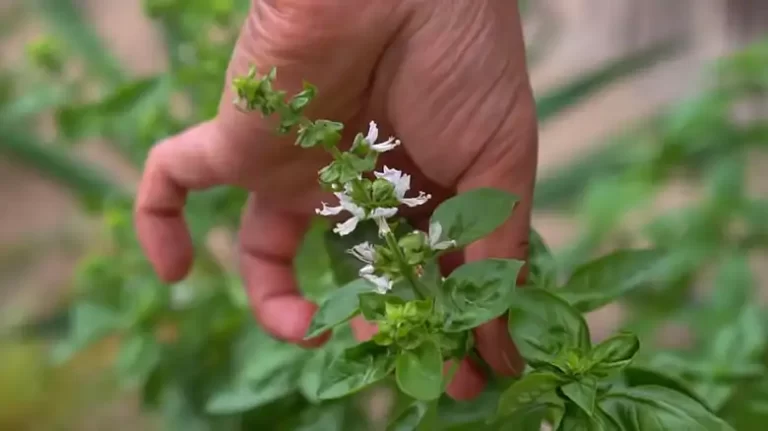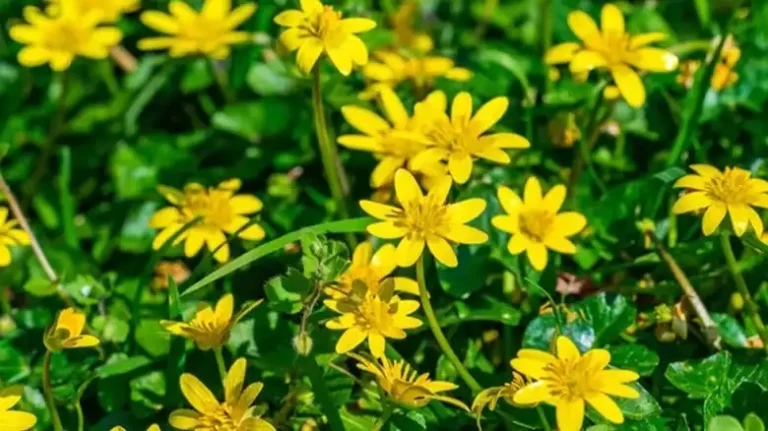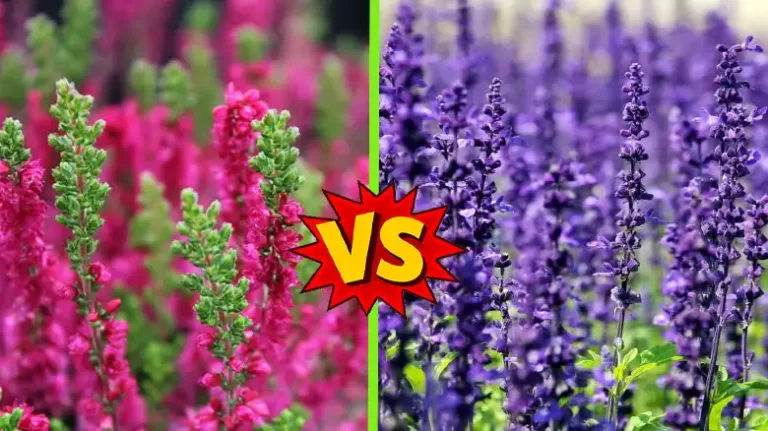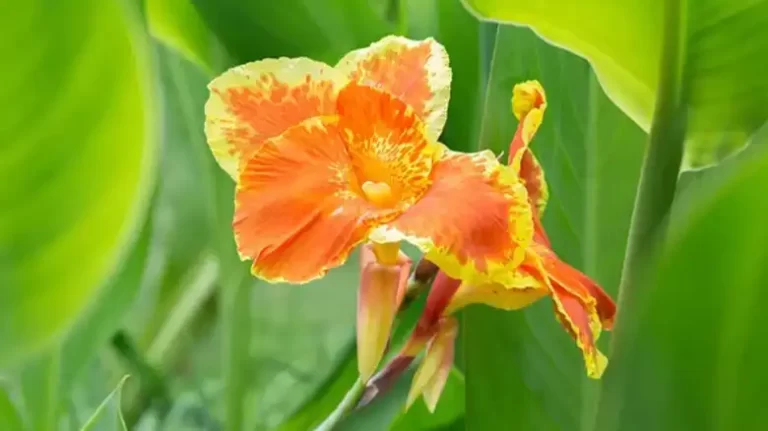Do Corn Plants Flower Bloom
When you gaze upon a vast field of corn, it’s easy to see a sea of tall, green stalks and rustling leaves. But have you ever wondered if these towering plants actually bloom with flowers?
In this article, we will delve deep into the world of corn plants, exploring their life cycle, the environmental factors that influence their flowering, the genetics behind their blooms, and the various factors affecting the timing of this natural spectacle.
By the end, you’ll have a newfound appreciation for the intricate world of corn plants.

The Corn Plant Life Cycle
Corn plants, those tall, green giants that dominate agricultural landscapes, have a life cycle filled with stages that are as fascinating as they are crucial.
Understanding the life cycle of corn plants is key to successful cultivation and appreciating the natural marvel that is the cornfield. In this article, we’ll take a journey through the various stages of the corn plant’s life cycle, from the humble seed to the bountiful harvest.
Germination: From Seed to Sprout
The journey of a corn plant begins with a tiny seed tucked away in the soil. When the conditions are right—adequate moisture, warmth, and proper soil composition—the seed awakens from its dormant state.
It starts sending out a tiny shoot, a sign that germination is underway. This shoot will eventually emerge from the soil as the first leaf of the young corn plant.
Seedling Growth: Establishing the Foundation
As the corn plant continues to grow, it directs its energy towards building a sturdy foundation. This phase, known as the seedling stage, is marked by the development of leaves and roots.
The leaves start to unfurl, capturing sunlight and kickstarting the process of photosynthesis. At this point, the young corn plant is entirely dependent on the energy stored in the seed.
Vegetative Growth: A Leafy Green Marvel
With its foundation established, the corn plant shifts its focus to vigorous vegetative growth. During this stage, it produces an abundance of leaves, which are like miniature factories for photosynthesis. These leaves capture sunlight, converting it into energy and using it to fuel further growth. The more leaves, the more energy, and the taller the corn plant becomes.
Transition to Reproductive Stage: Tassel and Ear Emergence
As the corn plant matures, it reaches a pivotal moment—the transition to the reproductive stage. This is when things get interesting. The corn plant begins to develop two distinct structures: the tassel and the ear.
Tassel: The Male Flower
The tassel emerges at the top of the corn plant and contains thousands of tiny flowers. These flowers release pollen into the air, a crucial step in the pollination process. The tassel’s mission is to ensure the transfer of pollen to the waiting ears below.
Ear: The Female Flower
The ear, found lower on the plant, is the female reproductive structure. It is covered in silky threads that capture pollen from the tassel. Each silk strand leads to a potential kernel, and successful pollination is the key to developing plump, juicy corn kernels.
Pollination Process: Nature’s Wind Dance
Unlike many plants that rely on bees and insects for pollination, corn plants have an entirely different approach.
They entrust their pollen to the wind, and when the breeze is just right, it carries the pollen from the tassel to the silks of the ear. It’s a mesmerizing natural dance, and the success of this wind-driven process determines the yield of corn.
Fertilization and Kernel Development: The Miracle of Growth
Once the pollen reaches the silk, the miracle of fertilization begins. Each fertilized silk strand becomes a kernel in the ear. Over time, these kernels grow and mature, transforming into the delicious corn we enjoy in so many forms, from fresh on the cob to popcorn and beyond.
Environmental Influences on Corn Flowering
Corn plants are more than just the towering green giants you see in fields; they are intricate living organisms influenced by their surroundings.
Understanding the environmental factors that impact corn flowering is crucial for farmers and anyone curious about the life of this staple crop. In this section, we’ll explore the various elements of nature that play a role in corn plant flowering.
1. Temperature Matters
One of the most significant influencers on corn flowering is temperature. Corn plants have specific temperature preferences for flowering. When it’s too hot or too cold, it can throw off their reproductive schedule.
Generally, corn prefers temperatures between 60°F and 86°F (15°C to 30°C) during the flowering stage. Extreme temperatures can disrupt the process, affecting yield.
2. The Dance of Day Length
Corn plants are sensitive to the length of daylight, a phenomenon known as photoperiod sensitivity. As the days grow longer or shorter with the changing seasons, corn plants sense these shifts.
The duration of daylight triggers the transition from vegetative growth to the reproductive stage. Understanding this sensitivity helps farmers time their planting to align with the optimal day length for flowering.
3. The Soil Connection
Beneath the surface, the soil provides essential nourishment to corn plants. Soil quality and nutrient levels can significantly influence flowering. Adequate levels of nutrients like nitrogen, phosphorus, and potassium are crucial for healthy blooms.
Additionally, the soil’s pH level can impact the availability of these nutrients to the plant. Ensuring the right soil conditions can improve the chances of a bountiful corn harvest.
4. Water’s Role in Blooming
Water, the elixir of life, also plays a pivotal role in corn flowering. Adequate moisture is necessary for the plant to grow and bloom.
Water stress at any stage of development, including flowering, can hinder the process and reduce yields. Farmers need to manage irrigation and moisture levels to ensure corn plants have the water they need to produce flowers and subsequently, corn ears.
5. Wind and Pollination
Unlike many other crops, corn relies on the wind for pollination. The tassel, the male part of the plant, releases pollen into the air. Wind carries this pollen to the female flower, the ear, for fertilization.
This wind-driven pollination dance is a marvel of nature. However, changes in wind patterns due to environmental factors like climate change can impact pollination and, consequently, corn yields.
6. The Impact of Climate Change
In recent years, climate change has introduced new challenges to corn cultivation. Rising temperatures, altered precipitation patterns, and extreme weather events can disrupt the delicate balance required for corn flowering.
Farmers and researchers are continually adapting to these changes, exploring new techniques and crop varieties to mitigate the effects of a changing climate on corn production.
Genetics of Corn Flowering
Corn, that ubiquitous grain that graces our tables in various forms, has a life cycle that remains a mystery to many. One crucial aspect of this cycle is the flowering stage.
But what influences when and how corn plants bloom? Genetics plays a vital role in unraveling this intricate process, offering insights into the fascinating world of corn flowering.
Genetic Variability: Nature’s Palette
Corn, also known as maize, isn’t a one-size-fits-all crop. It boasts a remarkable genetic diversity. This diversity results in various types and varieties of corn, each with its unique traits, including flowering patterns.
From the vibrant colors of heirloom corn to the uniformity of modern hybrids, corn genetics influence the plant’s flowering behavior. Farmers and breeders have leveraged this genetic variability to create corn varieties tailored to specific needs and environments.
Role of Genetic Modification
In the ever-evolving world of agriculture, genetic modification has become a powerful tool for shaping the characteristics of crops, including corn. Genetically modified organisms (GMOs) have been developed to exhibit altered flowering patterns.
These modifications can enhance resistance to pests, improve tolerance to adverse environmental conditions, or even control the timing of flowering to suit farming practices.
Genetic modification offers both opportunities and challenges. While it empowers farmers to cultivate more resilient and productive corn crops, it also raises questions about the potential long-term effects on biodiversity and ecosystems.
The debate over GMOs and their role in shaping corn flowering patterns continues to evolve as science advances and as we gain a deeper understanding of the genetics involved.
The Influence of Hybrid Selection
When farmers choose which corn hybrids to plant, they’re effectively making a genetic selection. Hybrid corn varieties are the result of carefully controlled crossbreeding, combining the genetic traits of different parent plants. The choice of hybrid can significantly impact when corn plants will flower.
Some hybrids are designed to mature early, leading to quicker flowering and potentially earlier harvests. These are well-suited for regions with shorter growing seasons. Conversely, late-maturing hybrids take their time to develop and flower, often yielding higher grain quality.
The decision of which hybrid to plant hinges on factors like climate, local growing conditions, and desired harvest times. It’s a delicate balancing act between genetics and environmental factors, and one that can greatly affect the success of a corn crop.
The Complex Genetics of Photoperiod Sensitivity
Photoperiod sensitivity is another layer of corn’s genetic complexity. This term refers to how plants respond to changes in day length. Corn plants, like many other crops, are influenced by the duration of daylight.
Some varieties are considered “short-day” plants, while others are “long-day” plants. Understanding these distinctions is crucial for farmers aiming to optimize corn flowering.
Short-day corn plants begin their flowering process when the days are shorter, often resulting in early maturation.
In contrast, long-day corn plants require extended periods of daylight before they start flowering. This inherent sensitivity to photoperiod means that farmers must select corn varieties tailored to their specific region and growing conditions.
Factors Affecting Flowering Time
Flowering in corn plants is a captivating natural phenomenon that plays a pivotal role in their reproductive cycle.
Understanding the factors that influence when and how these plants bloom is essential for both farmers and enthusiasts.
1. Genetic Variability
Corn Varieties: Different varieties of corn have distinct genetic traits that influence their flowering patterns. Some varieties may flower earlier, while others take longer to bloom. Farmers often select corn hybrids based on their desired flowering times to align with specific growing seasons.
2. Environmental Conditions
Temperature: Temperature plays a crucial role in the timing of corn flowering. Corn plants are sensitive to temperature fluctuations, and variations in temperature can either expedite or delay their flowering. Warmer temperatures generally lead to earlier flowering, while cooler conditions may prolong the process.
Photoperiod: Corn plants are also influenced by the length of daylight, known as photoperiod. Longer days encourage earlier flowering, while shorter days can postpone it. This photoperiod sensitivity is an adaptation that helps corn plants optimize their reproduction in different seasons.
Soil Nutrients: Adequate soil nutrition is essential for healthy corn plants and timely flowering. Imbalanced nutrient levels, particularly nitrogen, can affect flowering. Proper soil management and nutrient application can help ensure optimal flowering conditions.
Moisture: Adequate soil moisture levels are necessary for corn plants to thrive and flower on time. Both excessive moisture (waterlogged soil) and drought stress can hinder flowering. Maintaining consistent soil moisture is crucial for a successful corn crop.
3. Planting Practices
Planting Date: The timing of planting is a critical factor in determining when corn plants will flower. Farmers strategically choose planting dates based on local climate and growing conditions. Planting too early or too late can lead to flowering issues.
Hybrid Selection: Selecting the right corn hybrid for a specific region and purpose can significantly impact flowering time. Early-maturing hybrids tend to flower sooner, while late-maturing hybrids take more time. Farmers often make hybrid choices based on their goals for harvest timing.
4. Pests and Diseases
Insect Pests: Insect infestations can stress corn plants, affecting their overall health and flowering. Certain pests, like corn rootworms or aphids, can directly damage the reproductive structures of the plant, leading to delayed or disrupted flowering.
Diseases: Fungal diseases, such as rust or smut, can infect corn plants and impact flowering. These diseases weaken the plant’s ability to produce flowers and may lead to reduced yield. Disease management is crucial to ensure timely and healthy flowering.
Following Questions
Do All Corn Plants Flower?
Yes, all corn plants have the potential to flower, as flowering is an essential part of their life cycle.
How Long Does It Take for Corn Plants to Flower?
The timing of flowering varies depending on factors such as genetics, environmental conditions, and hybrid selection. Typically, it occurs within 60 to 100 days after planting.
Why Is Corn Pollinated by Wind?
Corn relies on wind pollination as a survival strategy. Wind ensures efficient pollen distribution across a wide area, increasing the chances of successful fertilization.
Can Genetic Modification Alter Corn Flowering Patterns?
Yes, genetic modification can alter corn flowering patterns, allowing for the creation of hybrids with specific flowering traits, such as resistance to pests or tolerance to environmental conditions.
Our Verdict
In the world of agriculture, corn plants are iconic, their towering stalks swaying in the breeze a familiar sight. Understanding the intricacies of corn flowering is not only fascinating but also essential for maximizing crop yields.
From the soil beneath their roots to the wind that carries their pollen, every aspect of a corn plant’s life contributes to its ability to bloom and produce the corn we know and love.
As you watch fields of corn sway in the wind, you’ll now appreciate the incredible journey each plant undergoes to bloom and bear the golden bounty of kernels we rely on for food and industry.

![Dolphin Flower Plant [Total Care Guide]](https://www.daisynatives.com/wp-content/uploads/2023/12/Dolphin-Flower-Plant-768x431.webp)



